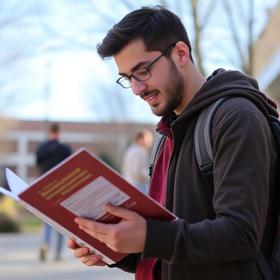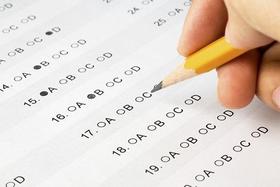School Highlights
Bryant & Stratton College-Wauwatosa serves 1,438 students (64% of students are full-time).
The college's student-teacher ratio of 7:1 is lower than the state community college average of 16:1.
Minority enrollment is 62% of the student body (majority Black), which is more than the state average of 35%.
Quick Facts (2025-26)
- Enrollment: 1,438 students
- Private-state tuition: $15,907
- Acceptance Rate: 65%
- Student-teacher ratio: 7:1
- Minority enrollment: 62%
- Source: Verified school update
Top Rankings
Bryant & Stratton College-Wauwatosa ranks among the top 20% of public schools in Wisconsin for:
Category
Attribute
Diversity
School Resources
School Overview
The teacher population of 196 teachers has stayed relatively flat over five years.
Bryant & Stratton College-Wauwatosa
(WI) Community College Avg.
Carnegie Classification
Baccalaureate/Associate's Colleges: Mixed Baccalaureate/Associate's
Associate's Colleges: High Career & Technical-Mixed Traditional/Nontraditional
Institution Level
Four or more years
At least 2 but less than 4 years
Institution Control
Private not-for-profit
Public
Total Faculty
196 staff
419 staff
School Calendar
Student Body
The student population of Bryant & Stratton College-Wauwatosa has stayed relatively flat over five years.
The student-teacher ratio of 7:1 has stayed the same over five years.
The Bryant & Stratton College-Wauwatosa diversity score of 0.69 is more than the state average of 0.55. The school's diversity has stayed relatively flat over five years.
Total Enrollment
1,438 students
5,183 students
Student-Teacher Ratio
7:1
16:1
# Full-Time Students
925 students
798 students
# Part-Time Students
513 students
4,385 students
# Enrollment Undergraduate
143 students
373 students
# Full-Time Undergraduate Students
925 students
798 students
# Full-Time Graduate Students
n/a
27 students
# Part-Time Undergraduate Students
513 students
4,624 students
# Part-Time Graduate Students
n/a
15 students
Total Dormitory Capacity
n/a
148 students
% American Indian/Alaskan
1%
1%
% Asian
4%
4%
% Hispanic
15%
10%
% Black
37%
9%
% White
38%
65%
% Hawaiian
n/a
n/a
% Two or more races
4%
3%
% Unknown races
1%
8%
Diversity Score
0.69
0.55
College Completion Rate (Students who graduate in less than 4 years)
n/a
48%
College Completion Rate (Students who graduate in 4 years or more than 4 years)
16%
22%
Average Graduate Earnings (10 Years)
$24,300
$34,300
Tuition and Acceptance Rate
The private state tuition of $15,907 is more than the state average of $13,728. The private state tuition has declined by 16% over four years.
Private State Tuition Fees
$15,907
$13,728
% Students Receiving Some Financial Aid
95%
76%
Median Debt for Graduates
$20,884
$11,250
Median Debt for Dropouts
$6,533
$5,500
Acceptance Rate
65%
88%
ACT Composite
n/a
21
ACT English
n/a
19
ACT Math
n/a
20
Source: 2024 (or latest year available) Integrated Postsecondary Education Data System (IPEDS) , School Administrators
School Notes
- School Mascot: Bobcats
Frequently Asked Questions
How much does Bryant & Stratton College-Wauwatosa cost?
Bryant & Stratton College-Wauwatosa's private state tuition is approximately $15,907.
What is the acceptance rate of Bryant & Stratton College-Wauwatosa?
The acceptance rate of Bryant & Stratton College-Wauwatosa is 65%, which is lower than the state average of 88%.
What is Bryant & Stratton College-Wauwatosa's ranking?
Bryant & Stratton College-Wauwatosa ranks among the top 20% of community college in Wisconsin for: Diversity in US community colleges and Percent of students receiving financial aid.
Recent Articles

How to Transfer from Community College to a Four-Year University in 2025
A step-by-step guide for community college students transferring to a four-year university in 2025 — updated strategies, data and expert insights.

Scholarships for Community College Students 2025
Explore updated scholarship programs, tuition data, and expert strategies for community college students in 2025.

The Rise of Technical and Vocational Training in 2025
Explore the 2025 surge in technical and vocational training—enrollment, policy, costs, and why this path is gaining ground for students and parents.





